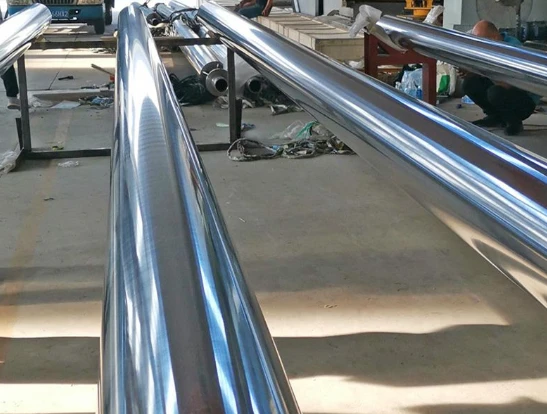
-
 Afrikaans
Afrikaans -
 Albanian
Albanian -
 Amharic
Amharic -
 Arabic
Arabic -
 Armenian
Armenian -
 Azerbaijani
Azerbaijani -
 Basque
Basque -
 Belarusian
Belarusian -
 Bengali
Bengali -
 Bosnian
Bosnian -
 Bulgarian
Bulgarian -
 Catalan
Catalan -
 Cebuano
Cebuano -
 China
China -
 China (Taiwan)
China (Taiwan) -
 Corsican
Corsican -
 Croatian
Croatian -
 Czech
Czech -
 Danish
Danish -
 Dutch
Dutch -
 English
English -
 Esperanto
Esperanto -
 Estonian
Estonian -
 Finnish
Finnish -
 French
French -
 Frisian
Frisian -
 Galician
Galician -
 Georgian
Georgian -
 German
German -
 Greek
Greek -
 Gujarati
Gujarati -
 Haitian Creole
Haitian Creole -
 hausa
hausa -
 hawaiian
hawaiian -
 Hebrew
Hebrew -
 Hindi
Hindi -
 Miao
Miao -
 Hungarian
Hungarian -
 Icelandic
Icelandic -
 igbo
igbo -
 Indonesian
Indonesian -
 irish
irish -
 Italian
Italian -
 Japanese
Japanese -
 Javanese
Javanese -
 Kannada
Kannada -
 kazakh
kazakh -
 Khmer
Khmer -
 Rwandese
Rwandese -
 Korean
Korean -
 Kurdish
Kurdish -
 Kyrgyz
Kyrgyz -
 Lao
Lao -
 Latin
Latin -
 Latvian
Latvian -
 Lithuanian
Lithuanian -
 Luxembourgish
Luxembourgish -
 Macedonian
Macedonian -
 Malgashi
Malgashi -
 Malay
Malay -
 Malayalam
Malayalam -
 Maltese
Maltese -
 Maori
Maori -
 Marathi
Marathi -
 Mongolian
Mongolian -
 Myanmar
Myanmar -
 Nepali
Nepali -
 Norwegian
Norwegian -
 Norwegian
Norwegian -
 Occitan
Occitan -
 Pashto
Pashto -
 Persian
Persian -
 Polish
Polish -
 Portuguese
Portuguese -
 Punjabi
Punjabi -
 Romanian
Romanian -
 Russian
Russian -
 Samoan
Samoan -
 Scottish Gaelic
Scottish Gaelic -
 Serbian
Serbian -
 Sesotho
Sesotho -
 Shona
Shona -
 Sindhi
Sindhi -
 Sinhala
Sinhala -
 Slovak
Slovak -
 Slovenian
Slovenian -
 Somali
Somali -
 Spanish
Spanish -
 Sundanese
Sundanese -
 Swahili
Swahili -
 Swedish
Swedish -
 Tagalog
Tagalog -
 Tajik
Tajik -
 Tamil
Tamil -
 Tatar
Tatar -
 Telugu
Telugu -
 Thai
Thai -
 Turkish
Turkish -
 Turkmen
Turkmen -
 Ukrainian
Ukrainian -
 Urdu
Urdu -
 Uighur
Uighur -
 Uzbek
Uzbek -
 Vietnamese
Vietnamese -
 Welsh
Welsh -
 Bantu
Bantu -
 Yiddish
Yiddish -
 Yoruba
Yoruba -
 Zulu
Zulu
grp damper
Understanding GRP Dampers Enhancing Structural Integrity
In the realm of engineering and construction, maintaining structural integrity is paramount. One of the innovations that have significantly contributed to this objective is the use of Glass Reinforced Plastic (GRP) dampers. These specialized devices are employed to mitigate vibrations and dynamic loads on structures, ensuring that buildings and bridges maintain their structural integrity over time. This article delves into the importance, functionality, and applications of GRP dampers, highlighting why they are becoming an essential component in modern engineering.
What Are GRP Dampers?
GRP dampers are made from a composite material consisting of a polymer matrix reinforced with glass fibers. This combination endows GRP with exceptional strength-to-weight ratios and excellent fatigue resistance, making it an ideal choice for applications requiring durability without excessive weight. The dampers are designed to absorb and dissipate energy, particularly during seismic events or high-wind conditions, thus protecting the primary structure from the potentially damaging effects of these forces.
Importance of GRP Dampers
One of the critical functions of GRP dampers is their ability to enhance the performance of structures subjected to dynamic loads. Buildings and bridges are constantly exposed to various forces, including wind, earthquakes, and even human activities. These forces can lead to excessive vibrations, which can compromise structural stability and safety over time. By integrating GRP dampers into a structure's design, engineers can effectively reduce these vibrations, ensuring that the building remains secure and comfortable for occupants.
Moreover, GRP dampers contribute to the longevity of structures. By lessening the stress imposed on critical components, these dampers can extend the lifespan of a building, reducing the frequency and cost of maintenance and repairs. This attribute makes them a cost-effective solution in the long run, as they provide significant savings by mitigating damage and prolonging the need for major renovations.
Functionality of GRP Dampers
grp damper

The working principle behind GRP dampers is relatively straightforward. When a dynamic force is applied to a structure, the dampers absorb some of the energy produced by that force, converting it into a small amount of heat through a damping mechanism. This process minimizes the amount of energy transmitted to the main structure, reducing the amplitude of vibrations experienced.
There are various types of dampers, including tuned mass dampers, viscoelastic dampers, and hysteretic dampers, each functioning based on different principles. The choice of damper depends on the specific requirements of the project, such as the type of structure, the anticipated forces, and the desired performance characteristics.
Applications of GRP Dampers
GRP dampers are versatile and can be utilized in a variety of applications. In seismic-prone areas, they are often integrated into the design of high-rise buildings and bridges. For instance, the incorporation of GRP dampers can significantly improve a skyscraper's ability to withstand earthquakes, providing peace of mind to engineers and occupants alike.
Additionally, these dampers find applications in wind-sensitive structures, such as telecommunications towers and wind turbines, where reducing oscillations is critical for longevity and performance. The lightweight nature of GRP dampers also makes them suitable for retrofitting existing structures, allowing engineers to enhance resilience without adding significant weight to the building.
Conclusion
In summary, GRP dampers represent a significant advancement in the field of structural engineering. Their ability to absorb and dissipate energy from dynamic loads not only enhances the integrity and safety of structures but also contributes to their longevity and cost-effectiveness. As construction technologies continue to evolve, the adoption of GRP dampers is likely to increase, providing robust solutions for the challenges faced by modern engineering. The integration of such innovative solutions will undoubtedly pave the way for safer, more resilient infrastructures in the future.









